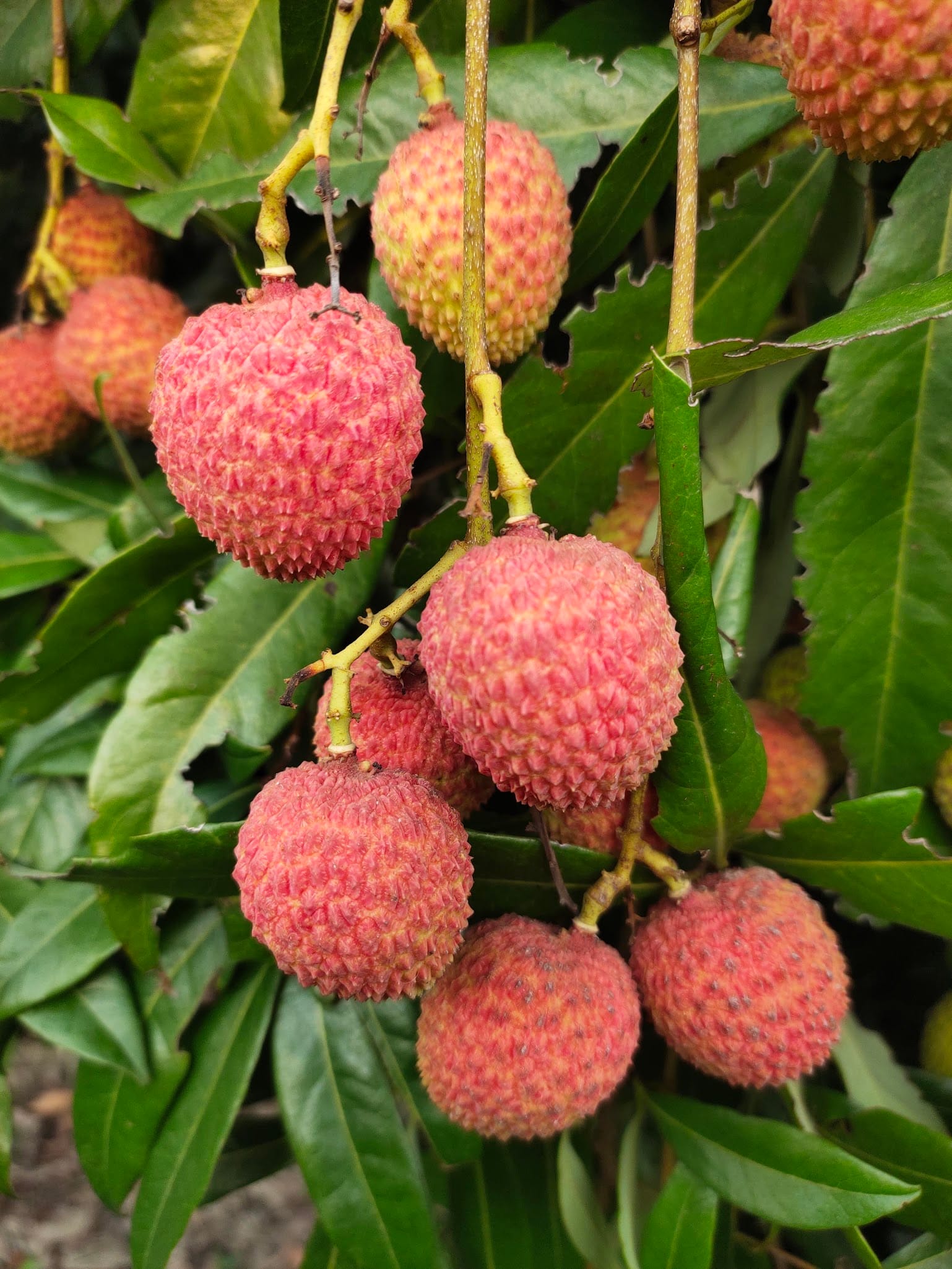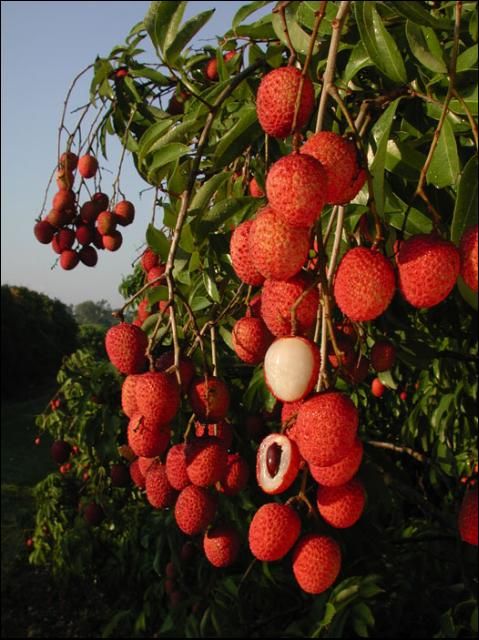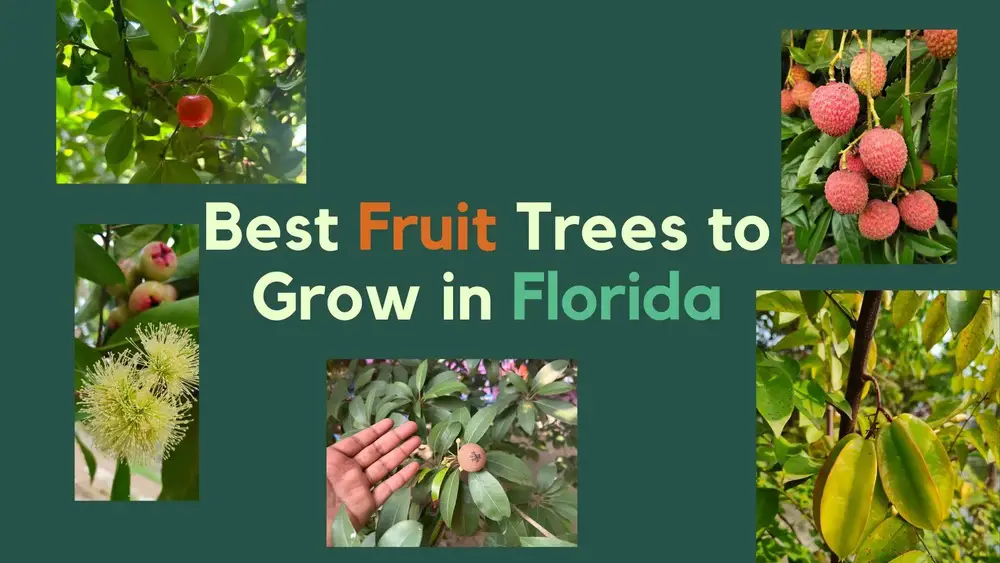If you’re dreaming of growing your own juicy, sweet lychee right in your Florida backyard, you’re in the right place. Choosing the best lychee variety to plant can make all the difference between a tree that thrives and one that struggles.
You want a tree that suits Florida’s unique climate—warm, humid summers and mild winters—and rewards you with bountiful, flavorful fruit year after year. You’ll discover which lychee varieties perform best in Florida, how to care for them, and insider tips to help you enjoy a successful harvest.
Ready to find the perfect lychee tree for your garden? Let’s dive in!
Climate For Lychee In Florida
Lychee trees grow well in Florida’s warm, humid climate. These subtropical trees need specific conditions to thrive. Understanding Florida’s climate helps choose the best place for planting lychee. The state’s weather varies from south to central coastal areas, affecting lychee growth differently.
South Florida Conditions
South Florida has warm temperatures year-round. It rarely experiences frost, which lychee trees dislike. The humidity is high, helping the trees stay healthy. Full sun is available most days, perfect for fruit growth. Soil tends to be sandy but can be improved with compost. Regular watering supports steady growth, especially in spring and summer. Wind can be strong, so young trees need protection. Overall, South Florida offers ideal weather for lychee trees.
Coastal Central Florida Challenges
Coastal central Florida has cooler winters than the south. Frost and freezes happen more often, risking tree damage. The soil can be heavier and less drained than in the south. This may require soil amendments to avoid root problems. Wind exposure is higher along the coast, which may harm branches. Extra care is needed to protect young trees from cold and wind. Despite challenges, lychee can grow here with proper attention.
Soil And Water Needs
Soil and water are vital for growing lychee trees in Florida. The right soil supports root health and nutrient uptake. Proper watering keeps the tree strong and fruit-rich. Both factors influence growth speed and fruit quality.
Soil Type And Preparation
Lychee trees prefer acidic soil with a pH between 5.0 and 6.5. Well-draining soil is essential to prevent root rot. Sandy loam with good organic matter works best. Add compost or peat moss to improve soil texture. Plant lychee on a small mound to boost drainage. Avoid heavy clay soil or areas prone to flooding.
Watering Tips
Keep the soil evenly moist but not waterlogged. Water young trees deeply once or twice a week. Mature trees need less frequent watering but more volume. Use drip irrigation or soaker hoses to reduce leaf wetness. Water early in the morning to allow drying. Reduce watering in cooler months to prevent overwatering.
Sunlight And Wind Protection
Proper sunlight and wind protection are vital for growing healthy lychee trees in Florida. These subtropical trees need enough sun to produce sweet fruits. Strong winds can harm young trees, so shielding them is important. A balanced approach helps lychee trees thrive in Florida’s climate.
Optimal Sun Exposure
Lychee trees grow best in full sun. They need at least six hours of direct sunlight daily. This sunlight fuels photosynthesis, helping the tree produce energy. In Florida, choose a planting spot with open sky. Avoid shaded areas under large trees or buildings. Morning sun is especially beneficial, as it dries dew and reduces disease risk.
Shielding Young Trees
Young lychee trees are delicate and need protection from strong winds. Winds can break branches and dry out leaves. Use windbreaks like fences or hedges to block harsh gusts. Temporary shade cloths can also shield young trees from both wind and intense sun. Secure soil around the base to prevent uprooting during storms. Careful protection helps young trees grow strong and healthy.
Top Lychee Varieties
Choosing the right lychee variety is key for success in Florida. Each type has unique traits that suit the climate and soil. Some varieties produce larger fruits, while others offer better flavor or higher yields. Understanding these differences helps you pick the best lychee tree for your garden.
Below are some of the top lychee varieties that grow well in Florida’s subtropical environment. These selections thrive in warm, humid conditions and can handle the occasional cold snap better than others.
Mauritius
The Mauritius lychee is popular for its sweet, juicy fruit. It has a thin red skin and firm flesh. This variety produces large clusters of fruit and offers a strong, floral aroma. It grows well in South Florida and matures early in the season.
Brewster
Brewster lychee trees are hardy and produce large fruits with a rich flavor. The skin is thick and rough, making it easy to peel. This variety handles Florida’s heat and humidity well. It is often chosen by commercial growers for its reliability.
Kwai May Pink
Kwai May Pink stands out for its attractive pink-red skin and sweet taste. The fruit has a crisp texture and is less fibrous than other types. This variety ripens later in the season, extending your harvest period in Florida.
Emperor
Emperor lychee produces large, round fruits with a bright red skin. Its flesh is juicy and flavorful with a hint of tartness. This variety is well-suited for Florida gardeners who want a balance of sweetness and acidity.
Hak Ip
Hak Ip, also known as Black Leaf, is prized for its dark red skin and rich taste. The fruit is medium-sized but very sweet and aromatic. It grows well in Florida’s climate and is a favorite among home growers.
Sweet Cliff
Sweet Cliff lychee offers large, round fruits with a thick red skin. It has a sweet, floral flavor and firm texture. This variety is resistant to some common diseases, making it easier to grow in Florida’s humid environment.
Planting And Care
Planting and caring for lychee trees in Florida requires attention to soil, water, and climate conditions. These subtropical trees thrive in warm, humid areas, especially in South Florida. Choosing the right spot with full sun and well-draining, acidic soil is crucial for healthy growth. Regular watering is necessary, but avoid waterlogging. Protect young trees from strong winds to prevent damage. Proper care helps lychee trees produce sweet, juicy fruits year after year.
Fertilizing Lychee Trees
Use a balanced, organic fertilizer designed for fruit trees. Apply fertilizer three times a year: early spring, late spring, and late summer. Spread fertilizer evenly around the root zone, staying away from the trunk. Water the tree after fertilizing to help nutrients soak into the soil. Avoid over-fertilizing, which can harm the tree and reduce fruit quality.
Pruning Techniques
Prune lychee trees to keep their shape and improve air flow. Remove dead or damaged branches regularly. Thin out crowded branches to let sunlight reach inside the tree. Pruning helps prevent disease and encourages fruit production. Perform major pruning after the harvest season. Use clean, sharp tools to make smooth cuts and reduce stress on the tree.
Harvest Season
Lychee fruits usually ripen from May to July in Florida. Watch for clusters of bright red fruits with a slightly soft texture. Harvest lychees carefully by cutting the fruit cluster with pruning shears. Avoid pulling fruits off to protect the branches. Freshly picked lychees taste best and store well in a cool place for a few days.

Credit: gardenvive.com
Maturity And Fruit Production
Understanding the maturity and fruit production of lychee trees helps gardeners plan their orchard and enjoy fresh fruit sooner. Lychee trees vary in how fast they bear fruit and how much they produce each season. Choosing the right variety for Florida’s climate affects these factors greatly.
Proper care and patience are key to getting a healthy, fruitful lychee tree. Some varieties start producing earlier, while others yield more fruit as they mature. This section explains the time to first fruit and tips to improve yield in Florida gardens.
Time To First Fruit
Lychee trees usually take 3 to 5 years to produce fruit after planting. Some dwarf or grafted varieties may fruit sooner, around 2 to 3 years. Seed-grown trees take longer and may not produce true-to-type fruit. Patience is important because young trees focus on growth before fruiting.
Flowering and fruiting depend on tree maturity and environmental conditions. Warm winters and good sunlight encourage earlier flowering. In Florida, especially South Florida, mild winters help trees bloom on time.
Improving Yield
Regular watering during dry spells supports steady fruit growth. Avoid overwatering, which can cause root problems. Applying a balanced fertilizer with nitrogen, phosphorus, and potassium helps boost flower and fruit development.
Pruning improves air circulation and light penetration. Remove dead or crowded branches to help fruit buds form. Protect trees from strong winds to prevent fruit drop and damage. Hand pollination or planting multiple trees may increase fruit set.
Common Challenges
Growing lychee trees in Florida offers great rewards but comes with challenges. These hurdles affect tree health and fruit yield. Understanding common problems helps you prepare better care.
Frost And Freeze Risks
Lychee trees are sensitive to cold weather. Frost and freezes can damage leaves and young buds. South Florida has fewer cold snaps, so lychee grows well there. Coastal central Florida faces more frost risk. Protect young trees with frost cloths or covers. Plant lychee in sheltered spots away from wind. Avoid low areas where cold air settles. Watch weather forecasts during winter months. Quick action can save your tree from freeze damage.
Pest And Disease Management
Pests like aphids, scales, and mites often attack lychee trees. These insects suck sap and weaken the tree. Use insecticidal soap or neem oil for control. Keep the area around the tree clean to reduce pests. Diseases such as anthracnose and root rot can also harm lychee. Good drainage helps prevent root rot. Prune to improve air circulation and reduce fungal growth. Regularly inspect your tree for signs of problems. Early treatment improves tree health and fruit quality.

Credit: m.yelp.com

Credit: edis.ifas.ufl.edu
Frequently Asked Questions
Does Lychee Grow Well In Florida?
Yes, lychee grows well in Florida, especially in South Florida’s warm, humid climate and coastal central areas. It needs full sun, acidic well-draining soil, regular watering, and wind protection.
What Is The Best Lychee Variety To Grow?
The best lychee variety to grow is ‘Mauritius’ for its high yield and sweet flavor. It thrives in warm, humid climates.
How Many Years Does It Take For A Lychee Tree To Fruit?
A lychee tree typically takes 3 to 5 years to produce fruit. Proper care and climate speed up fruiting.
Do You Need Two Lychee Trees To Produce Fruit?
No, one lychee tree can produce fruit, but planting two improves pollination and increases fruit yield.
Conclusion
Choosing the best lychee for Florida’s climate ensures healthy growth and sweet fruit. Plant trees in warm, sunny spots with well-drained, acidic soil. Water regularly and protect young trees from strong winds. Prune mature trees to boost fruit production and keep their shape.
Harvest season runs from May to July, offering fresh, delicious lychees. With proper care, your lychee tree will thrive and bring tasty rewards. Start planting today and enjoy Florida’s tropical flavors at home.

